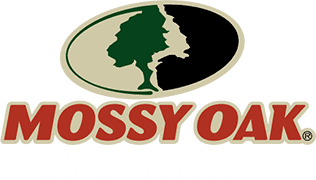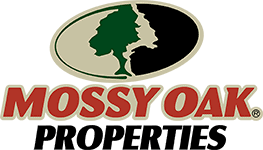Navigating Land Financing Options
Land financing works differently from regular home loans. Based on recent data from the National Association of Realtors, land loans typically require down payments of 20-50% compared to just 3-20% for traditional mortgages. Interest rates also run 1-5 percentage points higher than home loans, according to the latest Federal Reserve data. These differences exist because lenders view land as a riskier investment than developed property. Land can be harder to sell quickly if a borrower defaults, and without structures, its value assessment becomes more complex. Mossy Oak Properties specializes in helping clients understand these unique challenges and find appropriate financing solutions for various types of land for sale.
Best Loan Options for Land Buyers
Raw Land Loans
Raw land loans finance totally undeveloped property with no utilities, roads, or structures. Lenders typically ask for at least 30-50% down payment on these loans. Interest rates usually fall between 8-11% based on current market conditions. Most raw land loans run for shorter terms of 5-10 years rather than the typical 30-year mortgage. Borrowers must present a clear plan for the land use to gain approval from most financial institutions.
Unimproved Land Loans
Unimproved land loans cover property with some basic development like road access but lacking full utilities or infrastructure. Down payments generally range from 25-35% for these properties. Current interest rates average 3-8% for qualified buyers with good credit scores. Loan terms typically extend 15-20 years, longer than raw land but shorter than residential mortgages. The application process usually moves faster than for raw land because the property has some established value features.
Improved Land Loans
Improved land loans apply to property with utilities, road access, and some development already in place. Lenders usually require 20-30% down payment for improved land. Interest rates currently average 3-7%, making them more affordable than other land loan types. Loan terms can stretch 15-20 years in many cases. Approval rates run 20-30% higher for improved land versus raw land because lenders view these properties as less risky investments.
Top Lending Options
Bank & Credit Union Loans
Traditional banks and credit unions offer land loans with interest rates currently averaging 6-11% depending on property type. Most require credit scores of 680+ for approval, though some may accept 650+ with higher down payments. Down payment requirements typically range from 20-50% based on land type and planned use. Loan terms generally run between 5-20 years, significantly shorter than residential mortgage loans. National banks tend to have stricter requirements while local institutions may offer more flexible terms.
USDA Rural Housing Loans
USDA Rural Housing loans provide government-backed financing for land in designated rural areas with plans for a primary residence. These loans require no down payment in many cases, unlike most land financing options. Current interest rates average 4-6%, substantially lower than most private land loans. Property must be located in areas with populations under 35,000 to qualify under program guidelines. The application process takes 30-45 days on average, making this option somewhat slower than private financing.
SBA 504 Loans
SBA (Small Business Administration) 504 loans work best for business owners buying commercial land for their operations. Down payments run as low as 10%, much lower than traditional commercial land loans. Current interest rates average 5-7% with loan terms extending up to 25 years in some cases. Qualification requires proof of business ownership and a detailed plan for land use. The loan structure typically includes participation from both a bank and a Certified Development Company.
Home Equity Loans & HELOCs
Home equity loans allow borrowing against the existing property value to finance land purchases. Current interest rates average 6-8%, making this option competitive with traditional land loans. Borrowers can typically access up to 80-85% of their available home equity. Approval requires home ownership with sufficient equity and good credit scores. Processing generally takes 2-3 weeks, faster than most other land financing options.
Seller Financing
Seller financing involves direct payment arrangements between the buyer and the landowner without traditional lender involvement. Down payments vary widely from 10% to 50% based on negotiation between parties. Interest rates typically range from 4-10%, depending on market conditions and buyer creditworthiness. Loan terms can be highly customizable, often ranging from 5-30 years. This option involves legal documentation, including promissory notes and proper recording of the transaction.
Comparison of Land Financing Options
| Financing Type | Interest Rate Range | Down Payment | Approval Time | Credit Score Requirement | Loan Term | Risk Level |
| Raw Land Loan | 8-11% | 30-50% | 30-60 days | 700+ | 5-10 years | High |
| Unimproved Land Loan | 7-9% | 25-35% | 21-45 days | 680+ | 10-15 years | Medium-High |
| Improved Land Loan | 6-8% | 20-30% | 14-30 days | 650+ | 15-20 years | Medium |
| Bank/Credit Union | 6-11% | 20-50% | 14-30 days | 650-680+ | 5-20 years | Medium |
| USDA Rural Housing | 4-6% | 0-10% | 30-45 days | 620+ | Up to 30 years | Low-Medium |
| SBA 504 | 5-7% | 10% | 60-90 days | 650+ | Up to 25 years | Medium |
| Home Equity | 6-8% | N/A | 14-21 days | 660+ | 5-30 years | Low-Medium |
| Seller Financing | 4-10% | 10-50% | 7-14 days | Negotiable | 5-30 years | Varies |
How to Qualify for a Land Loan
- Good Credit History
Most lenders look for credit scores of 650 or higher for land loans, with scores above 700 securing the best interest rates. According to recent industry data, borrowers with scores below 600 face rejection rates of over 80% for land loan applications. - Debt-to-Income Ratio
Lenders typically want to see a debt-to-income ratio under 43%, with the most competitive rates offered to those under 36%. Monthly debt payments, including the new land loan, should not exceed this percentage of the buyer’s gross monthly income. - Substantial Down Payment
Land loans almost always require larger down payments than home loans, typically 20-50% of the purchase price. Raw, undeveloped land usually demands the highest down payments, often 35-50% of the total cost. - Clear Land Use Plans
Lenders want detailed information about the plans for the property. A well-documented land use strategy can improve approval chances by up to 40% according to lending industry reports. - Income Verification
Expect to provide at least two years of tax returns, recent pay stubs, and complete financial statements. Self-employed buyers need to show a consistent income history spanning at least three years in most cases. - Property Appraisal
Land appraisals look at comparable sales, zoning regulations, access to utilities, and environmental factors. The appraisal process for land takes 30-45% longer than residential property appraisals in most regions.
Pros & Cons of Financing Land
Pros
- Investment Growth Potential: Land values have increased by an average of 6% annually over the past decade in many rural markets, outpacing inflation and offering solid appreciation potential.
- Tax Advantages Available: Land ownership provides potential tax benefits, including deductions for property taxes, loan interest, and, in some cases, conservation easements that can reduce taxable income.
- Financial Leverage Opportunities: Financing allows purchase with a fraction of the total cost upfront, enabling acquisition of larger or more valuable properties than possible with cash-only purchases.
- Future Development Flexibility: Owned land provides options for building, agriculture, recreational use, or resale, creating multiple potential revenue streams or personal use opportunities over time.
- Inflation Protection Benefits: Land typically maintains or increases value during inflationary periods, making it a solid hedge against rising costs in other economic sectors.
Cons
- Higher Interest Rate Burden: Land loans average 1-5 percentage points higher interest rates than residential mortgages, significantly increasing the total cost over the life of the loan.
- Strict Qualification Standards: Approval requirements include higher credit scores, larger down payments, and more detailed documentation than typical for home loans, limiting accessibility.
- Additional Development Costs: Bringing utilities to raw land averages $15,000-$30,000 per acre in many regions, creating substantial additional expenses beyond the purchase price.
- Limited Lender Options: Fewer financial institutions offer land loans compared to residential mortgages, reducing competition and making favorable terms harder to find.
- Longer Holding Period Needed: Land typically requires 5-10 years minimum holding time for meaningful appreciation, making it less liquid than many other investment options.
Finding Land That’s Easy to Finance
Land with existing infrastructure access generates more favorable financing terms from most lenders. Properties located within a quarter mile of public utility access points typically qualify for interest rates 1-2% lower than completely undeveloped parcels. Similarly, land with established road frontage on public roads rather than private easements improves loan approval chances by approximately 30%, according to lending industry data.
Before applying for financing, investigate zoning regulations thoroughly, as they significantly impact lender decisions. Properties zoned for agricultural, residential, or commercial use typically receive more favorable financing terms than those with unclear designation or restrictive covenants. Mossy Oak Properties specializes in helping buyers identify parcels that meet preferred lender criteria, potentially saving thousands in interest costs over the life of a loan. Our network covers properties across multiple states, with particular expertise in rural and recreational properties that balance natural features with practical financing considerations.
Steps to Secure Land Financing
- Step 1 – Budget Assessment and Credit Review: Calculate your total budget including purchase price, down payment, closing costs, and future development expenses. Review your credit report to identify your current score and address any issues before applying.
- Step 2 – Land Type Determination: Identify whether your target property classifies as raw, unimproved, or improved land, as this impacts which loan programs offer the best terms for your situation.
- Step 3 – Lender Research and Rate Comparison: Contact multiple lender types including banks, credit unions, and specialized land lenders. Request written loan estimates to compare interest rates, terms, and fees accurately.
- Step 4 – Documentation Preparation: Gather necessary paperwork including tax returns, bank statements, proof of income, and land use plans. Most lenders also require a professional land survey.
- Step 5 – Property Selection with Expert Guidance: Work with Mossy Oak Properties to find land parcels that match both your needs and lender requirements, focusing on properties with characteristics that typically receive more favorable financing terms.
- Step 6 – Application and Closing: Submit your complete loan application with all required documentation. After approval, review closing documents carefully before signing and be prepared to pay your down payment and closing costs.


